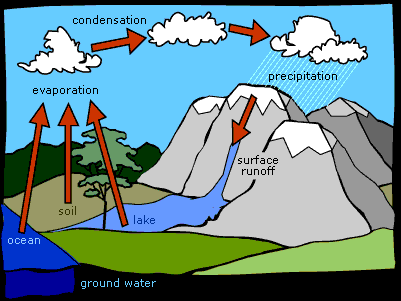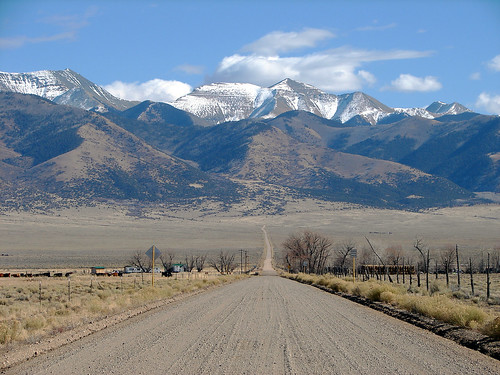Based on
the sand composition of the Great Sand Dunes, it can be concluded that the sand
originated mainly in the San Juan Mountains.
As explained in the last post, this is due to the process of weathering
the San Juan Mountains. The process of
erosion (movement of weathered sediments) is what is responsible for the
carrying of sand to the eastern boarder of the San Luis Valley were the active
dune-filed lies. Most of the time, this
erosion process is fueled by wind currents which occur in the valley.

One
such wind current is the Alamosa Rose Wind.
This is a Southwesterly wind which North through the San Luis Valley
until it reaches the base of the Sangre De Christo Mountains. This predominant wind force (air pressure) is
created through thermal variance in air cells in the San Luis Valley. Since the valley floor is relatively flat and
low in elevation (when compared to the mountains surrounding the valley) it can
be concluded that the air in the valley is warmer than the air found nearer the
mountains. As the third law of geography
states, wind always blows from high to low pressure. Since warm air usually has higher pressure
than cool air, the wind in the valley blows the sand towards the mountains
where the elevation is higher thus resulting in cooler air masses. This process can be thought of as a cyclone
(when warm high pressure air flows to cooler low pressure air). As the winds rise up the Sangre De Christo
range, the sand falls out and becomes deposited at the base of the mountains. The sand is deposited in this particular
location in the valley because the wind exits the valley over the Medano, Mosca, and Music Passes (low spots at the peak
of) the Sangre De Christo Mountain Range.
It is here where the winds funnel over the mountains. If a map of wind currents was to be done at
these passes, the isobars would be very close together. This process is more noticeable during the
spring months since the variance in temperature between the mountains and the
valley is greater during this time.

As the
warm air climbs the Sangre De Christo Mountains it becomes cooler and reaches
its dew point this is when clouds form.
This is known as orographic lifting (when topographic features force air
to rise). As the moisture in the air
cools it condenses on particulate matter in the atmosphere. This does not occur until the air reaches the
Lifting Condesation Level (at which the temperature is correct for dew (clouds)
to form).

Diagram showing the rain-shadow effect.
It is interesting that the San
Luis Valley is located in the rain-shadow (leeward side) of the San Juan Mountains
and receives 8 inches of precipitation a year.
However, the valley is also located on the windward side of the Sangre
De Christo Mountains. As the air rises
up the mountains clouds can be seen forming at the peaks of the Sangre De
Christo Mountains. These clouds cannot
proceed over the mountains until they release their water weight.
Interesting facts:
The sand dunes absorb lots of heat during the summer, and results in a surface
temperature of about 140 degrees Fahrenheit

When lightning strikes the dunes, it produces Fulgurites. These are columns of sand that have been
melted together from the extreme heat of a lightning strike.






